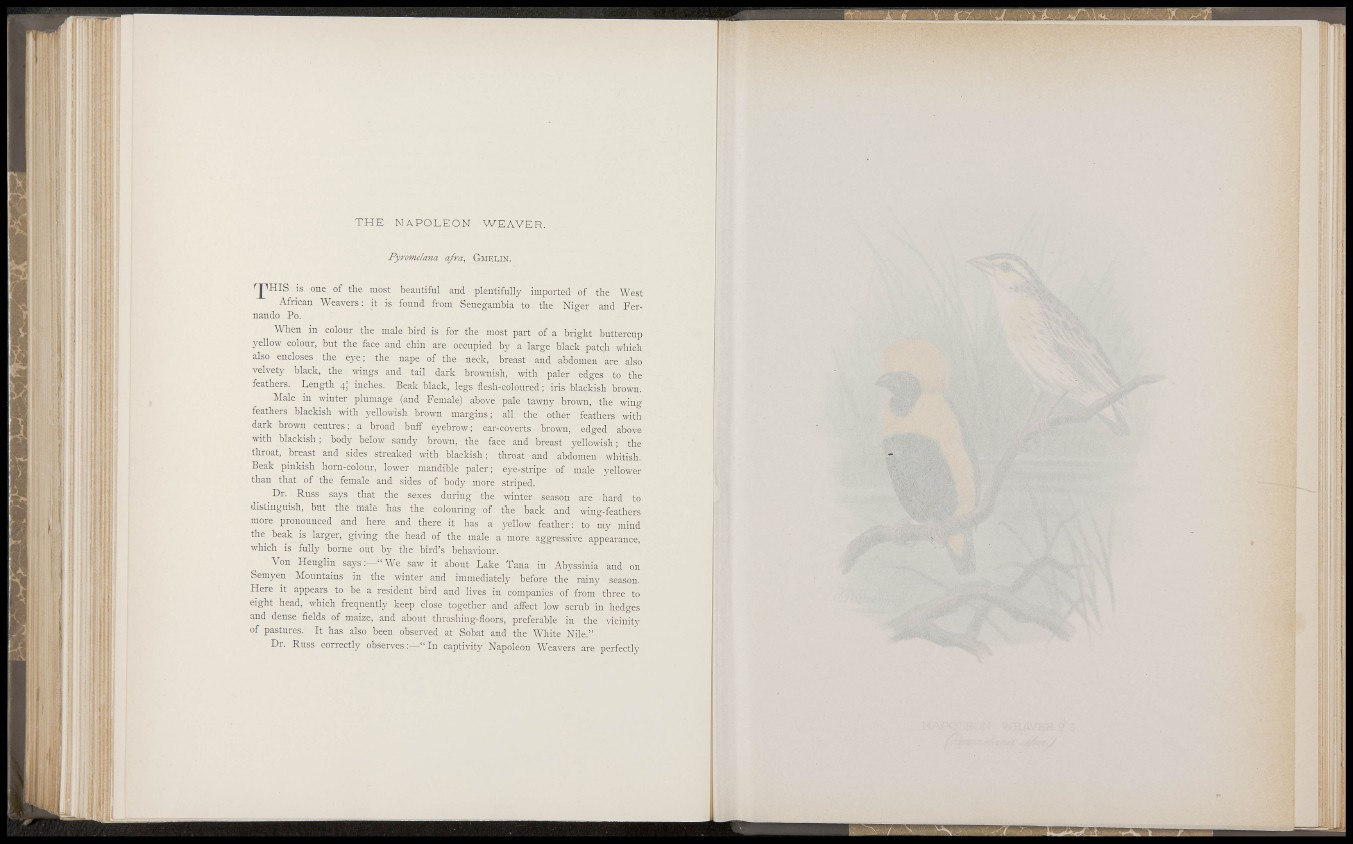
E
iir.;-
t M
K
'i I
mt
i' !
H
J i i
is
T H E NAPOLEON WEAVER,
Pyromelana afra, GMELIN.
' J ^ H I S is one of the most beautiful and plentifully imported of tlie West
African Weavers: it is found from Senegambia to tlie Niger and Fernando
Po.
When in colour the male bird is for the most part of a bright buttercup
yellow colour, but the face and chin are occupied by a large black patch which
also encloses the eye; the nape of the neck, breast and abdomen are also
velvety black, the wngs and tail dark brownish, with paler edges to the
feathers. Length 4" inches. Beak black, legs flesh-coloured; iris blackish brown.
Male in winter plumage (and Female) above pale tawny brown, the wing
feathers blackish vi-ith yellowish brown margins; all the other feathers wth
dark brown centres; a broad buff eyebrow; ear-coverts bro^ai, edged above
with blackish; body below sandy brown, the face and breast yellowish; the
throat, breast and sides streaked with blackish; throat and abdomen whitish.
Beak pinkish horn-colour, lower mandible paler; eye-stripe of male yellower
than that of the female and sides of body more striped.
Dr. Russ says that the sexes during the winter season are hard to
distinguish, but the male has the colouring of the back and wing-feathers
more pronounced and here and there it has a yellow feather: to my mind
the beak is larger, giving the head of the male a more aggressive appearance,
which is fully borne out by the bird's behaviour.
Von Heuglin says:—"We saw it about Lake Tana in Abyssinia and on
Semyen - Mountains in the winter and immediately before the rainy season.
Here it appears to be a resident bird and lives in companies of from three to
eight head, which frequently keep close together and affect low scrub in hedges
and dense fields of maize, and about thrashing-floors, preferable in the vicinity
of pastures. It has also been observed at Sobat and the White Nile."
Dr. Russ correctly o b s e r v e s I n captivity Napoleon Weavers are perfectly
Ski'-'/®- \
1; i • '
, : ' ! i
- r" ' I '
,,, f
iii'i •